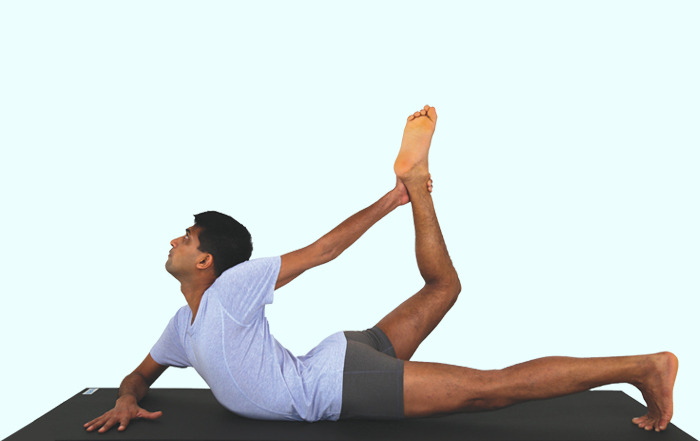Iliopsoas syndrome, also called iliopsoas tendonitis, is an under-reported and under-diagnosed clinical problem. Ballet dancers often suffer from this. It can occur in runners, hurdlers, high jumpers and many other athletes. The diagnosis is often missed; generally, no significant therapeutic measures are recommended except rest.
Anatomy
The illiopsoas muscle crosses over more than one joint known as polyarticular joint. It is a combination of two large muscles; the psoas major and iliacus. The two muscles lie very deep in the abdominal cavity and join together in the pelvic region.
The psoas muscle originates from the sides of the T12-L5 vertebral bodies, discs, and transverse processes of the lower back.
The iliacus originates on the upper 2/3 of the inner surface of the Illiac Fossa (the buttock bone) and it inserts on the lesser trochanter of the femur (thigh bone) along with the psoas on the inside of the pelvis forming in to a single tendon.
Iliopsoas muscle is first activated during infancy when a baby is learning to sit up and walk. It acts as a pulley as it curves over the front rim of the pelvis on its way to femur. So iliopsoas muscle moves the bones of the lower back, pelvis, and hip in a coupled fashion. The iliopsoas is mainly a hip flexor and weak lateral rotator. It plays a major role in walking, running and side bends.
iliopsoas pain may show up anywhere along their length muscles.
Symptoms
The following symptoms may occur:
• Pain in the hip and thigh region
• Snapping feeling in the hips
• Pain is worse upon standing or sitting
• Pain during bowel movement
• Pain exacerbated by anti-gravity activity
• Pain diminishes in a recumbent position
Causes
The condition occurs primarily in gymnasts, dancers and track athletes. It is generally caused by repetitive hip flexion. Various causes include:
• Sudden fall
• Prolonged sitting with the hips flexed at 90 degrees or greater
• Sleeping in a fetal position
• Pregnancy
• Sit ups or crunches
Mayurasana (Peacock Pose)

1. Sit in Vajrasana; then spread the knees apart.
2. Keep the arms between the thighs and bring the elbows closer to the abdomen.
3. Raise the hips up and lean forward on the arms with palms facing towards the feet, keeping the wrists either together or slightly separate.
4. Keep the elbows under the abdomen, rest the forehead on the mat and stretch the legs one by one straight.
5. Raise the head and shift the weight forward. Slowly raise the legs and stretch them backwards while leaning forward.
Variation
6. Go into baddha konasana (butterfly pose) with hands either on the floor or on a block to have firm grip to balance and lift.
7. Slightly raise the chest to balance.
8. Stay in the pose for 10-20 seconds with the body parallel to the floor, breathing evenly.
Benefits: This stimulates the abdominal organs. The press in the iliopsoas muscles releases tension and stiffness.
…more
To read the full article please download our Asana Journal App or purchase Issue 149 May 2015.




















 Other
Other
One thought on “Yoga Therapy for Iliopsoas Syndrome”